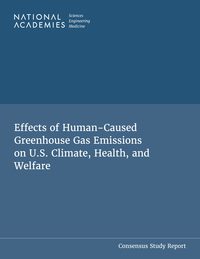Does the Clean Air Act Mask One of Our Worst Remaining Air Pollution Problems?
New Article Addresses Hot Spot Pollution and the Clean Air Act
 Over the last fifty years, we have made huge progress in cleaning up the nation’s air. Overall pollution levels have dropped by 70 percent since the 1970s, cars are 99 percent cleaner, and we’ve essentially eliminated lead from the atmosphere. The Clean Air Act is the main reason for this success, saving countless lives and billions of dollars. The most stubbornly persistent remaining problem, though, is hot spot pollution: certain geographic areas that have air pollution problems much more serious than surrounding areas. Hot spot pollution affects low income communities and communities of color more frequently because it is tied to predictable causes –living near heavily trafficked roads and highways and large industrial polluters.
Over the last fifty years, we have made huge progress in cleaning up the nation’s air. Overall pollution levels have dropped by 70 percent since the 1970s, cars are 99 percent cleaner, and we’ve essentially eliminated lead from the atmosphere. The Clean Air Act is the main reason for this success, saving countless lives and billions of dollars. The most stubbornly persistent remaining problem, though, is hot spot pollution: certain geographic areas that have air pollution problems much more serious than surrounding areas. Hot spot pollution affects low income communities and communities of color more frequently because it is tied to predictable causes –living near heavily trafficked roads and highways and large industrial polluters.
In a new article I’ve just published, The Clean Air Act’s Blind Spot: Microclimates and Hot Spot Pollution, I argue that, paradoxically, the Clean Air Act may actually mask hot spot pollution and hinder efforts to address it. Here is the abstract of the article:
The Clean Air Act (CAA) has delivered enormous pollution reductions in its almost fifty-year history, produced huge health benefits, and saved thousands of lives. Its ambient focus has led to the almost complete elimination of lead and dramatic drops in the other pollutants it regulates. Nevertheless, the CAA has a major blind spot: small “microclimates” that contain levels of deadly pollutants that can far exceed federal standards. Such places require one to wear a N95 mask as these hotspots contain pollutants that exacerbate asthma, increase respiratory and cardiac deaths, may cause developmental problems in children, and increase cancer risks. The most prevalent of these pollution hotspots occur in predictable patterns around heavily trafficked roads and industrial facilities. Low-income communities and communities of color are much more likely to live in polluted microclimates and suffer health effects as a result. This Article argues that the ambient focus of the CAA, which requires the monitoring and regulation of large air districts to produce background levels of pollution that meet stringent federal standards, actually masks pollution hotspots. Residents who live in air districts that receive the imprimatur of “attainment” under the CAA may nevertheless experience air quality that is considerably worse than federal air standards. Paradoxically, residents of air districts that are out of attainment, even with extreme designations, may be breathing background air that is cleaner than residents in attainment zones who are exposed to hotspot pollution. Our regulatory system helps shape our understanding of health and safety risks, in other words, in ways that are inconsistent with scientific reality. Unfortunately, using the traditional CAA mechanisms, primarily the National Ambient Air Quality Standards (NAAQS), to regulate conventional pollutants is an awkward fit for hotspot pollution. States are the primary regulators of these pollutants, yet they have little authority over the biggest causes of hotspot pollution: cars, heavy-duty trucks, and other vehicles. Nevertheless, the Article offers suggestions for how states and the Environmental Protection Agency (EPA) may be able to address microclimate pollution using existing statutory authority. Indeed the most effective strategy for dramatically reducing hotspot pollution, electrifying the transportation fleet, also happens to be one of the most effective ways to reduce greenhouse gas emissions. Recognizing the immediate health benefits that greening the fleet would deliver could make action on climate change mitigation more palatable.
Have a read!







Reader Comments